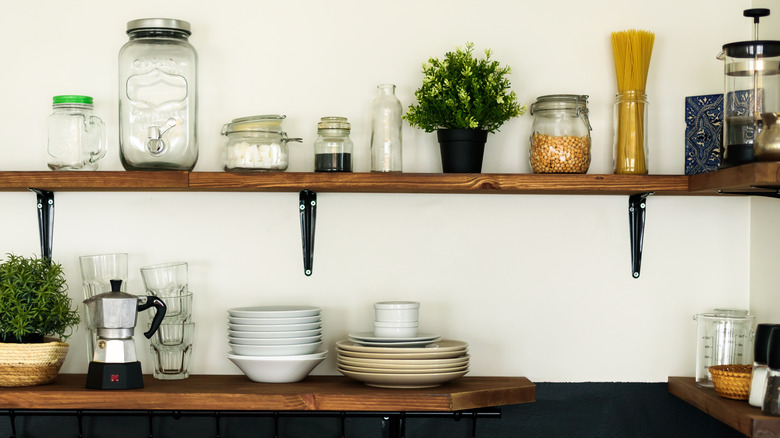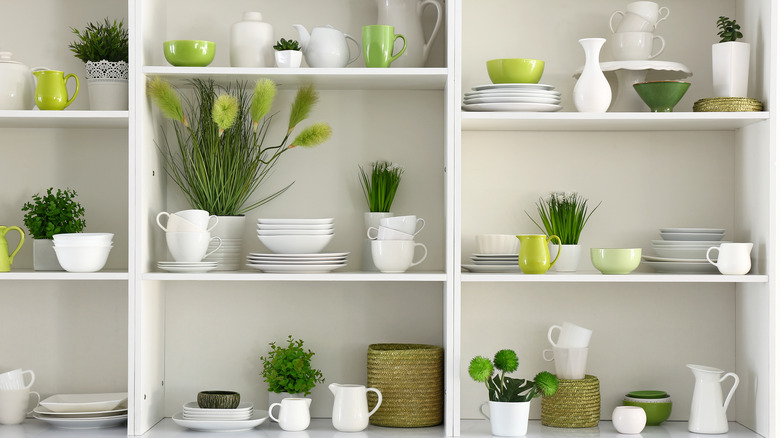You'll Wish You Didn't Know This About Open Shelving
First introduced in the early 1900s, open shelving has come a long way since then. Built out of the need for more storage, open shelving was often featured in mid-century homes between 1930 and 1960 as a way for homeowners to store their pots and pans and display their most prized cooking possessions (via RWC). Since then, open shelving has made quite the comeback and left interior designers arguing over whether or not the trend is here to stay.
Despite its popularity though, trends often come with upsides and downsides. Although there are plenty of upsides to the decades-old trend, some homeowners have worried about the upkeep of open shelving and whether or not the shelves are a magnet for dust. During a panel for Apartment Therapy, six people from around the world discussed the open shelving that they have in their own kitchens. While some praised the shelving as an ideal replacement for cabinets in small, dark, and awkward shaped kitchens, others expressed concerns over the cleanliness and overall maintenance of open shelving.
The ups and downs of open shelving
The panel members for Apartment Therapy illustrated that while open shelving may seem like a good idea at first, especially for the people who want a bright and airy kitchen, they don't always work. The panel also pointed out that if the items on your shelves aren't used very often, you should clean them on a regular basis as dust and grime often build up on various surfaces in the kitchen. The group eventually came to the conclusion that while they all enjoyed their shelves, they can be a big commitment for homeowners as you have to curate your belongings and use them on an almost daily basis.
Along with the panel, dust on open shelving has been a longtime concern for lifestyle editor and writer, Ayn-Monique Klahre. The writer, who has written a number of articles about cleaning techniques for Kitchn, set out to investigate how dusty open shelving can get over the course a three-week period. Using her own kitchen as the testing site, Klahre selected four areas and labelled them one through four before starting the investigation.
Dusty findings
The most frequented space in her kitchen, Ayn-Monique Klahre used her countertop workspace as zone one for the investigation. After the testing period ended, she shared her findings with Kitchn's readers, noting that there was only a light coating of dust in the area. Zone two, which was a wine rack across the room from her workspace, presented similar results, although it only received periodic use.
Supporting Apartment Therapy's panel discussion, zones three and four showcased completely different results. Located next to her fridge and near an open door, zone three saw an increase in dust accumulation over the three-week period due to an increase in airflow and limited usage. For zone four, Klahre used an open cabinet above her stove to mimic open shelving. Her findings for the zone showed a dramatic increase in accumulated dust, along with multiple pieces of lint. She also noted that the cabinet's contents had develop a greasy texture and would need to be thoroughly cleaned before being used.
Following the investigation, Klahre concluded that shelf location and regular usage are key components to maintaining open shelving in kitchens. She has since published a secondary article for Kitchn that features helpful tips from homeowners who have open shelving in their homes. And for those who are still considering adding them to your kitchen, just remember that they aren't for everyone, so if they don't work out for you, that's ok.



